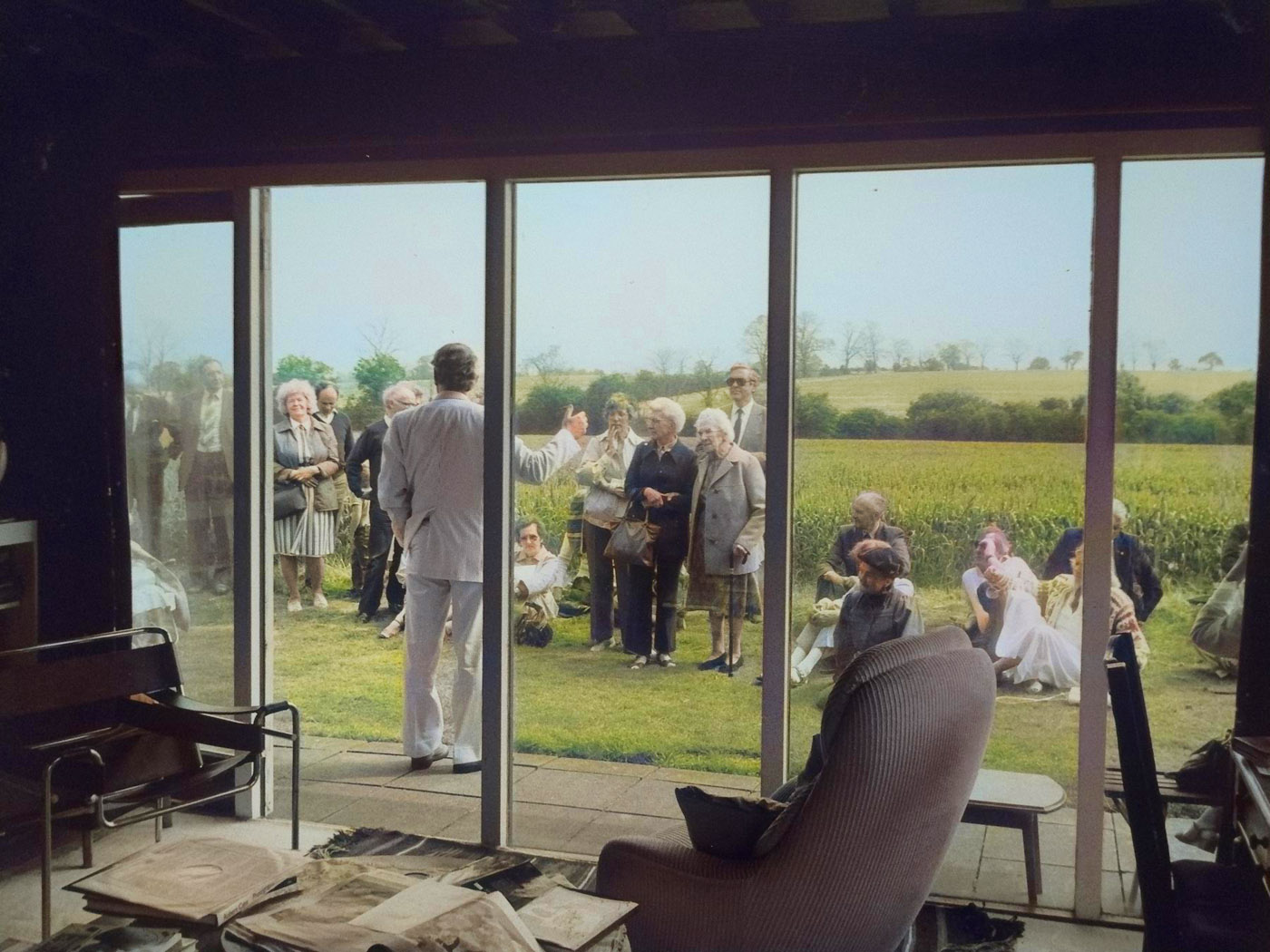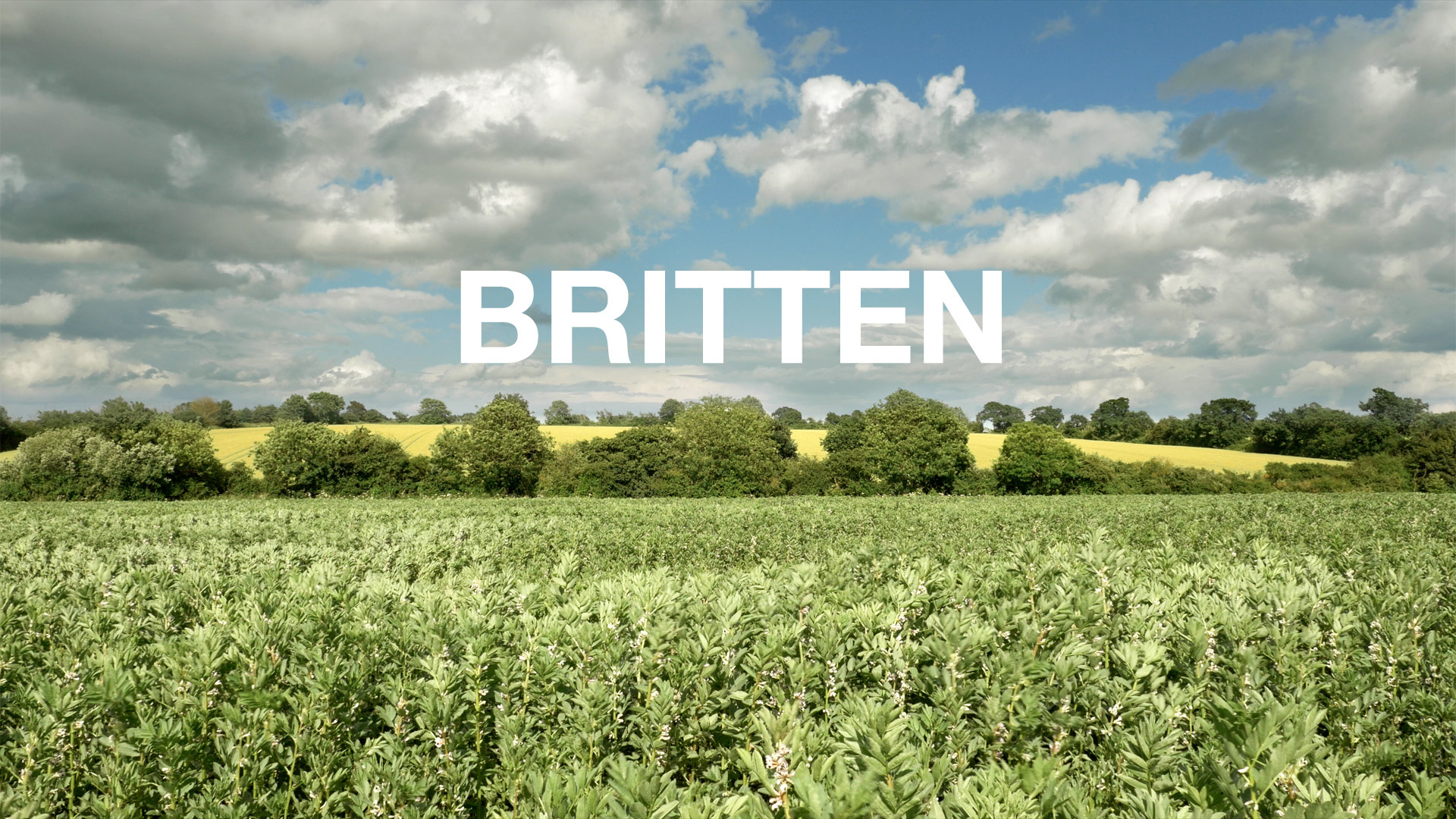THE BRITTEN FIELD
The Britten-Pears Foundation asked me to film the Suffolk landscape Benjamin Britten contemplated in the 1970’s while composing his later works. The field above, planted in the year of filming with broad-beans, is still known locally as The Britten Field.
A film of two halves, capturing the winter and summer of 2016. Experimentally as a contextual amplification, the two seasons are set to the same repeated 15 minute composition – Suite on English Folk Tunes – which Britten wrote directly in front of this view.
‘Do you really think that the classical music heads, will get their knickers twisted over playing the same piece twice in a row? I would hope not, as the juxtapositions between the two sequences, tied together through the repetition of Britten’s work holds the whole visual/musical aspects in perfect tension’, Dr Miciah Hussey.
‘Unforgettable. Once you’ve seen this film, the ‘Suite on English Folk Tunes’ cannot be heard again without those fields arising in one’s minds-eye, they are now inseparable. In a quietly dramatic way it must be one of the most important and refreshing documents surrounding Britten’s music that I’ve come across.’
SCREENING
To live orchestra, Snape Maltings, Suffolk, UK : TBA
Direction, Camera, Editor : Julian Simmons
Filmed on location : Suffolk, England
Length : 30 minutes
Capture : 4k @ 25fps
Sound : Stereo 44.1kHz or 48kHz (copyright / contact Britten-Pears Foundation)
Having moved away from the increasingly busy coast around what had been Britten’s main residence, the Red House in Aldeburgh, the later works reflect the 1971-76 period when Britten lived in a deepest Suffolk cottage, enveloped by wood-pigeon oaks, yellowhammer hedges and larking skies. Friends including his nurse Rita, recount that while out walking he would teach them the songs of countless birds.
Here are the very same views Britten imbibed to score Death in Venice, the Third String Quartet and Suite on English Folk Tunes ‘A Time There Was’ (1974) – to which this film corresponds.
The trees and hedges in this 2016 film and archive photographs from the 1970’s – of Britten addressing a gathered audience, are remarkably similar…

‘The Britten Field’ leads up to and between a pair of venerable gateway oaks – fondly known in these parts as “mum and dad”, a centuries-old meeting-place positioned on the crossroads of two ancient bridleways. The dad sentinel of this gateway having the distinctive shape of a raptor’s head and beak, a watchful chess-piece, often seen in this film upon the horizon (in the still-frame that begins this article under the N of Britten). After this film was made, both these oaks and many others were significantly de-limbed, saplings uprooted & hedge-growth floored. Yet this now far bleaker and bird-quiet land than you see here, still imparts a resonant ‘memory of it’s ground’ to passers-by, writers and musicians.
Britten’s parting sentiment ‘A Time There Was’ has extra pertinence today, an encouragement to reappraise this land as a rich inspirational source for all, to re-emerge it’s uniquely rooted English character and originality.
‘The Britten Field is a beautiful meditative elegiac testament to Britten and to this magical land that he and we love and cherish in our souls. I think it could be a powerful conduit to help people reconnect to nature, both outside and that within. We all need reminding of the magic that is all around us all the time. When we forget it we lose ourselves’, Renata Danobeitia.
‘I absolutely adore and truly am moved by this film. Of course the landscape and the music are sublime, but you have captured it with such life and energy. The wind syncopating the grasses across the fields—it’s a synesthestic festival of the natural world’s rhythms seemingly harnessed by Britten’s meter. I’m also entranced by how you have captured the light—it’s muted vibrancy compels you to the place itself, and then the shifts to evening, the atmospheric conundrums of weather and the winter sequence with a static melancholy. I hope one day that this will be screened with a live orchestra’, Dr Miciah Hussey, Radical Interiorities, Aesthetic Selves.
